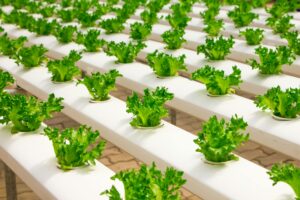In 2024, PRIMA launched a call focused on “Revitalizing Agroforestry Practices for Sustainable Land Use and Climate Resilience in the Mediterranean,” which has led to an exciting new wave of innovation and collaboration.
PRIMA’s Agroforestry Commitment
Thanks to this call, 11 new agroforestry projects have joined the PRIMA Family, bringing the total number of agroforestry-related projects funded by PRIMA to 15. With a combined budget of 17.27 million euros (€17.27M), these projects are contributing to the transformation of Mediterranean agriculture through sustainable, climate-resilient practices.
Highlighting PRIMA’s 15 Agroforestry Projects
Here’s a closer look at some of the innovative projects PRIMA is supporting:
- AGROFIG: Fostering agroforestry benefits through fig tree cultivation in the Mediterranean.
- CorkMed: Improving cork quality yield and monitoring for revitalizing sustainable agroforestry in the Mediterranean Basin.
- AGROFORESTEAM: Advancing territorial sustainable management through agroforestry.
- COSMOS: Optimizing sustainable Mediterranean agroforestry with truffles and high-value species.
- ASPmed: Supporting the agroecological transition towards sustainable sheep and poultry farming in the Mediterranean.
- FORECAST: Developing resilient agroforestry systems with climate-ready trees and herbaceous germplasm.
- BIODIVERSIFY: Boosting ecosystem services through biodiversity-based farming systems.
- TRANSITION: Innovative, resilient farming systems for Mediterranean environments.
- RivAgroforMed: Revitalizing agroforestry systems for higher farm productivity through agroecological transitions.
- SHARE: Promoting shared innovations for Mediterranean agroforestry systems.
- SustAgri: Promoting sustainable agroforestry systems.
- SCALARE: Scaling agroforestry through living labs for resilient Mediterranean agroecosystems.
- TAIE: Innovating and empowering truffle agroforestry.
- MA4SURE: Strengthening Mediterranean agroecosystems for sustainability and resilience in the face of climate change.
- QUINOA4MED: Exploring quinoa as a climate-smart crop diversification option in Mediterranean agriculture.
The Dual Benefits of Agroforestry
Agroforestry practices provide dual benefits: they promote sustainable food production while also contributing to carbon sequestration, reducing greenhouse gas emissions, and enhancing the resilience of agricultural systems. By integrating trees into agricultural landscapes, agroforestry supports biodiversity, soil health, and water management — critical aspects of environmental sustainability.
Through these practices, agroforestry becomes a key component of the agroecological transition, helping farmers shift toward more sustainable, integrated systems that preserve the land for future generations.
Addressing the Challenges of Agroforestry
However, adopting agroforestry practices is not without its challenges. Small-scale farmers often face barriers such as limited access to technical expertise, a lack of knowledge transfer, and difficulties in securing financial support. Furthermore, economically viable options for agroforestry systems can be difficult to identify, especially when access to markets for agroforestry products is limited.
To overcome these hurdles, it is essential to provide targeted support through technical assistance, knowledge transfer, and financial aid. Favorable policies and improved market access for agroforestry products will also help enhance the economic viability of agroforestry systems, making them more attractive to farmers




